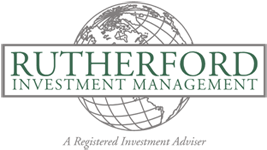Published April 7, 2017

Another possibility is that the market could pause and let the fundamentals catch up. Currently, the market’s price-earnings (P/E) ratio is about 22 times earnings versus its five-year average of 18.2. Such a lofty P/E points to a correction, but if earnings were to increase, the P/E would go down. Earnings can increase if the economy is strong and profits rise. Right now, optimism prevails.
However, there is a sharp divide among Democrats and Republicans in outlook. A recent survey by the University of Michigan showed that respondents who identified as Democrat expect an imminent recession, a higher unemployment rate, lower income gains and faster inflation. Conversely, Republicans expect strong growth in incomes and job prospects, coupled with lower inflation.
Another catalyst for a market updraft would be a tax cut, and that possibility is being discussed. Tax cuts would have a strong impact on earnings, which in turn would reduce the P/E ratio of stocks. But optimism about a tax cut got a sharp knock recently when President Trump’s move to repeal Obamacare failed to pass in the Republican-controlled U.S. House of Representatives, casting doubt on his ability to implement his overall agenda. So, with the stock market rally long in the tooth, the setback caused the market to pause.
A pause can be healthy for the markets. It enables the economy to catch up and reduce the multiples.
The Federal Reserve recently raised interest rates. That was a positive sign for the markets, because the Fed would not have raised rates unless it believed the economy is strong. The Fed plans two or three additional rate increases this year, signaling an optimistic view of the economy.
Interestingly though, when the Fed raised rates, the market interest rates barely moved. At the same time, the price of gold went up. Gold is an inflation hedge, so maybe traders thought the Fed is behind the curve on inflation. Indeed the rate of inflation did increase to 2.1 percent in its last reading, but this is in line with the Fed goal. For years the Fed has been trying to get the inflation rate up to 2 percent.
Because of the Fed rate increase, the dollar strengthened initially, but then weakened. When the market failed to follow the Fed lead and interest rates declined, the dollar weakened as investors lost faith in the Trump economic agenda and traders sought higher rates in non-U.S. markets. Noteworthy is that the Mexican peso has been among the best-performing currencies against the dollar since Trump was elected. The peso closely tracked Trump’s fortunes during the campaign and may be doing so now. If so, the peso is predicting a lessening of the threat to Mexico that is posed by Trump. He is already backing off his strong rhetoric regarding NAFTA and suggesting that any changes may be small tweaks, and not the major overhaul that he promised. Dollar weakening and gold strengthening may just be another suggestion that the overall Trump agenda may be in jeopardy.
What can an investor do in this period of uncertainty? Begin by considering long-term objectives. Review asset allocation. Control the things you can control such as spending and saving rates. Review risk tolerance. Plan and stick with your plan; don’t be knocked out of it by market a swing; that is a sure-fire way to lose money.
No one will send you a memo about a market correction; it will happen unannounced and may be sharp, but if you stick with a long-term investment strategy, history indicates that you will come out ahead.
William Rutherford is the founder and portfolio manager of Portland-based Rutherford Investment Management. Contact him at 888-755-6546 or wrutherford@rutherfordinvestment.com. Information herein is from sources believed to be reliable, but accuracy and completeness cannot be guaranteed. Investment involves risk and may result in losses.
